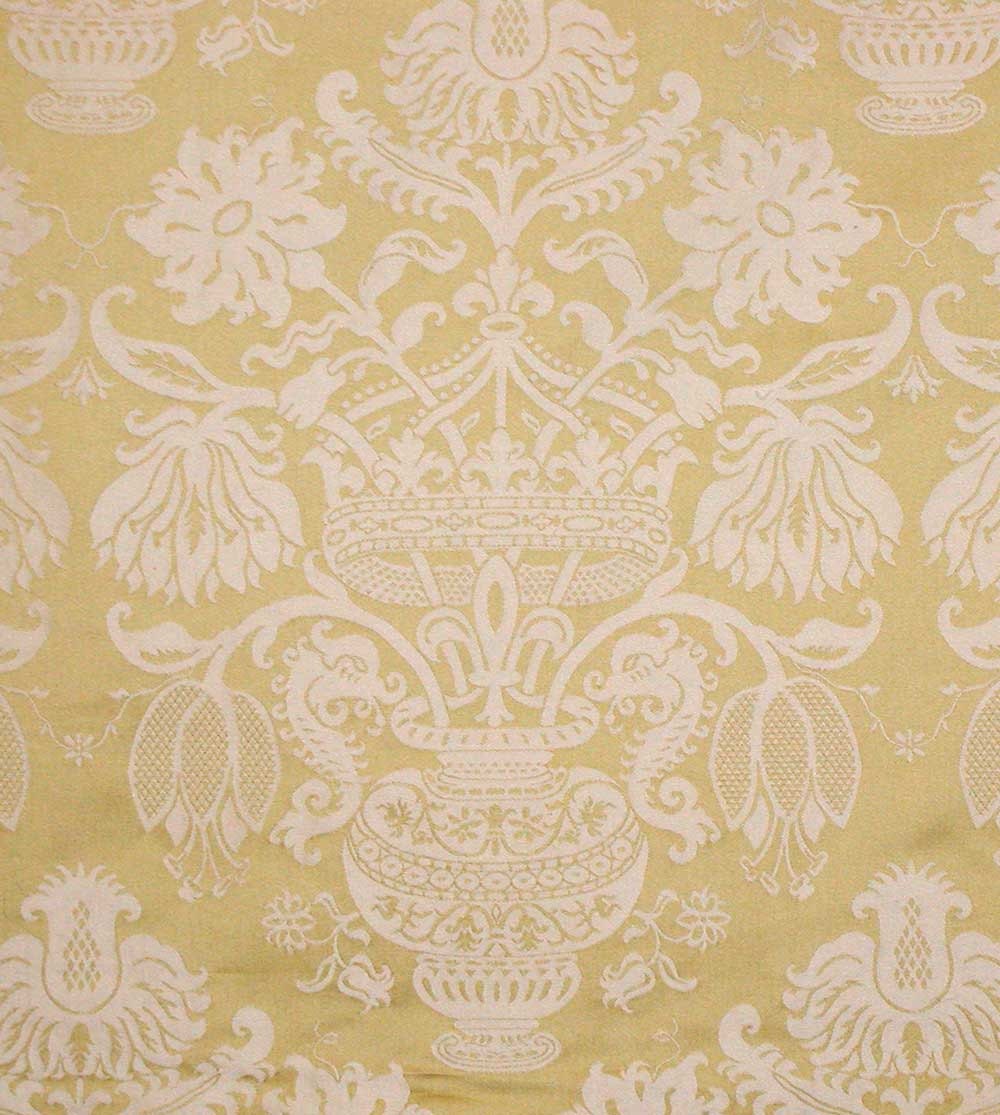The production of damask used one of the five basic weaving techniques of the Byzantine and Islamic weaving centres of the early Middle Ages.
Damasks derive their name from the city of Damascus - in that period a large city active both in trading (as part of the silk road) and in manufacture. Damasks became scarce after the ninth century outside of Islamic Spain, but were revived[by whom?] in some places in the thirteenth century.
By the fourteenth century damasks were being woven on draw looms in Italy. From the fourteenth to the sixteenth century, most damasks were woven in a single colour, with a glossy warp-faced satin pattern against a duller ground. Two-colour damasks had contrasting colour warps and wefts, and polychrome damasks added gold and other metallic threads or additional colours as supplemental brocading wefts. Medieval damasks were usually woven in silk, but weavers also produced wool and linen damasks.
Modern damasks are woven on computerized Jacquard looms.
Damask weaves are commonly produced in monochromatic (single-colour) weaves in silk, linen or synthetic fibres such as rayon and feature patterns of flowers, fruit, and other designs. The long floats of satin-woven warp and weft threads cause soft highlights on the fabric which reflect light differently according to the position of the observer. Damask weaves appear most commonly in table linens and furnishing fabrics, but also in clothing.
 cotton polyester rayon damask
cotton polyester rayon damask wool damask
wool damask linen damask
linen damask
cotton damask
 |
| Damask - Dolce & Gabbana, Marni, Etro |
No comments:
Post a Comment